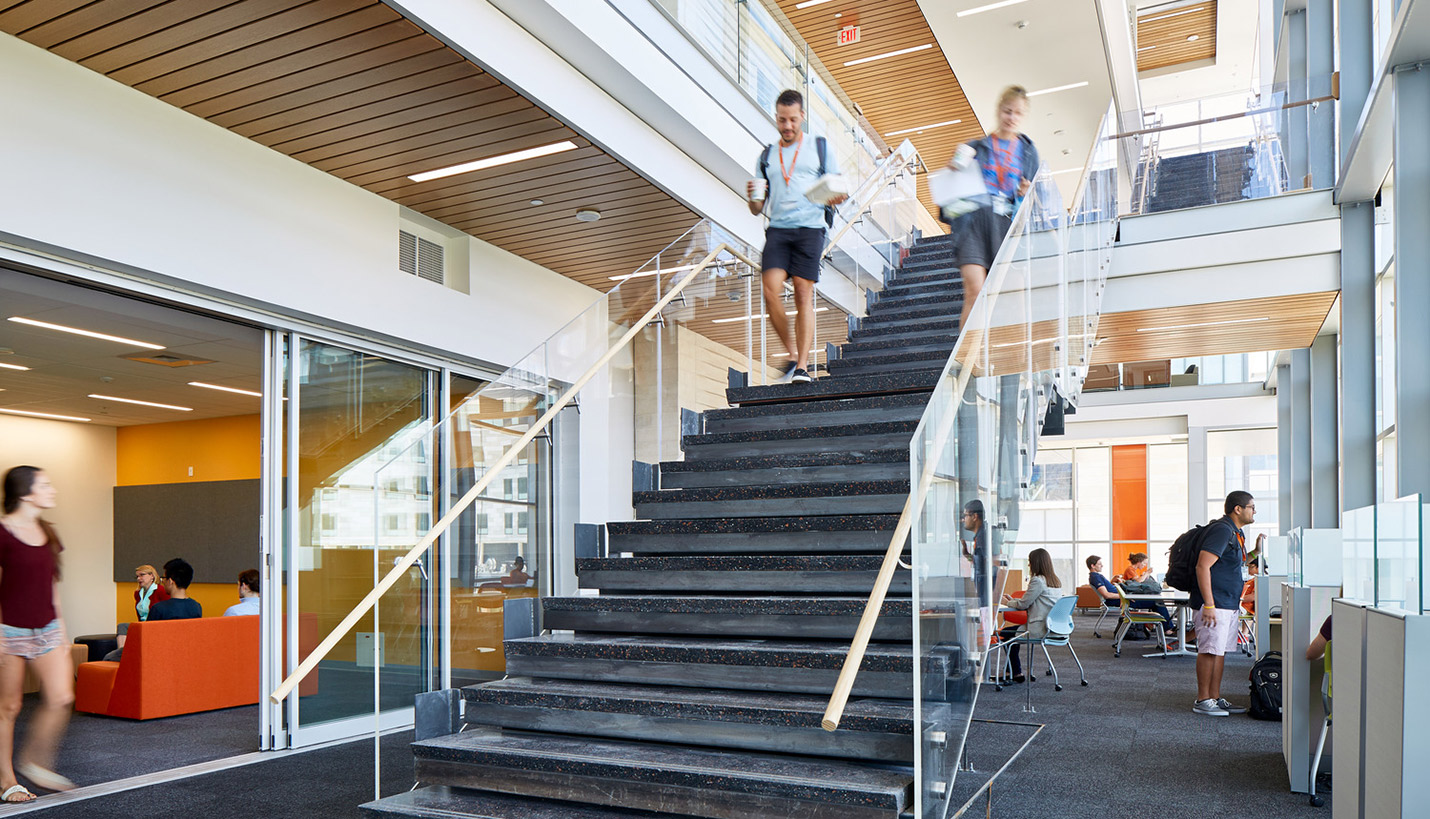

Nurturing Resiliency through Relationships
We depend on physicians to be resilient in a crisis, and medical school certainly tests students’ endurance. Recent meta-analysis of earlier research shows that nearly 50% of all medical students experience burnout, which puts them at increased risk of depression, suicidal ideation and dropout. The issue of burnout among medical students was top of mind for the founders of Dell Medical School at The University of Texas at Austin, the first new medical school created at a Tier 1 research university in 50 years. They were committed to redesign medical education to boost resiliency, and they focused on creating a tight-knit community where students could find support.
Dr. Sue Cox, the former Planning Dean and current Executive Vice Dean of Medical Education and Chair of Medical Education at Dell Medical School, explained their strategy:
“When you design a medical school from scratch, you have to create a community from scratch. There is no existing fabric of relationship. When designing our curriculum, we eliminated a lot of garbage from our own medical education and increased the amount of time students spend working in teams. Page designed a building that supports this, and it has helped us create a sense of community,” said Dr. Cox.
The Health Learning Building’s design combats burnout through an integrated and holistic approach to well-being:
- Social relationships are protective of mental health. The “social edge” facilitates spontaneous connections that help new cohorts of students get to know each other and members of faculty. Adjacent to the “social edge”, two lounges with kitchens, flexible seating and folding glass walls offer medical students semi-private space to relax, conduct meetings or host presentations. Beyond the lounges, 10 smaller team rooms serve as “home base” for a group of 10 students for the duration of the academic year. At every scale, the building helps students form a supportive social network.
- Natural light stabilizes mood. The social edge features a glass curtainwall that admits soft and consistent northern light. Sunlight stimulates the production of serotonin, a neurotransmitter responsible for stabilizing mood and aiding self-control.
- Physical activity is as effective as an antidepressant. The sculptural stair’s prominent and convenient location relative to the elevator core encourages users to move around. Student spaces are on the third and fourth floors, while the café and primary lecture hall are on the first, so students get exercise as they move around the building.
- Viewing fine art reduces stress. The building’s public spaces serve as a backdrop for several significant art installations that evoke the fragility, transience, and resiliency of life. The art has practical and poetic purposes: It supports students’ development as diagnosticians by training their eyes to appreciate small details. It also invites reflection and contemplation, which is shown to reduce cortisol levels and trigger the brain’s reward centers.
“We wanted the architecture to contribute to the vitality and longevity of the institution. In our first cohort of 50 students, 25 went on spring break together. They have built a strong sense of connection to each other,” noted Dr. Cox.
The results are remarkable. The American Association of Medical Colleges just published the results of its annual survey of second-year medical students, and those at Dell Medical School scored higher than the national average in creativity and innovation. They also reported getting more sleep, experiencing less academic and financial stress, and feeling more connected to peers and faculty than the survey average. While it will be several years before Dell graduates its first physicians, early indicators point to success. Dell’s innovative curriculum and focus on collaborative learning is preparing tomorrow’s healthcare professionals for future practice while safeguarding their well-being in the present.
Earlier this spring, Page hosted Metropolis Think Tank, a design-focused panel discussion moderated by Metropolis Magazine’s Director of Design Innovation, Susan S. Szenasy. ‘Architecture, Resiliency and Community’ explored the social dimension of resilient design through the lens of several current Page projects: Magnolia Montessori For All, the Health Learning Building at Dell Medical School and Block 71.
09/24/2018
People
- Daniel Brooks
- Robert E. Burke
- Ginny Chilton
- Joshua D. Coleman
- Kregg Elsass
- Mattia J. Flabiano III
- Patrick Gurley
- Breanne Hanson
- Shawn-Marie Henson
- Jeffrey G. Jewesson
- Matthew Z. Leach
- Ryan Losch
- Joseph P. Moore
- Erin D. Nash
- Bryan O'Sullivan
- Freddy Padilla
- Dale Robinson
- Brian D. Roeder
- Sana Sabharwal
- Kimberly Schuessler
- Jerald L. Segner
- Jonah T. Sendelbach
- Talmadge Smith
- Lawrence W. Speck
- Wendy Dunnam Tita
- Randy C. Twedt
Related Posts
- Countdown on Carbon: A mandate for the design profession
- Pagers on the Front Lines of COVID-19 Effort
- Faster building performance analysis helps architects meet AIA 2030 goals
- Tempering the Temporary: Improving thermal comfort and safety in relief shelters
- Evolving Our Building Sciences Practice
- Protecting San Francisco’s Trees
- Building Equity in Communities








